Matador Network's Blog, page 720
January 7, 2021
Swedish lighthouse film festival
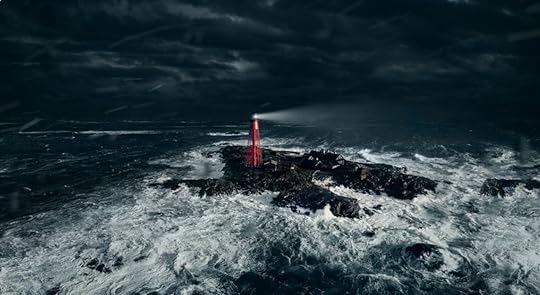
A traditional movie theater experience is hard to come by these days, but in Sweden, you can still have a safe (and pretty epic) time at the movies. The Göteborg Film Festival, the largest film festival in Scandinavia, is inviting one cinema enthusiast to spend a week watching movies alone on an isolated lighthouse island in the middle of the North Sea.
The festival itself is going digital due to the pandemic, but the organizers wanted to give one fan the special lighthouse experience by setting up a contest. If chosen, the winner will be transported by boat to the island of Pater Noster, get set up in the former lighthouse keeper’s house, and spend the week from January 30 to February 6 watching film festival movies.
Jonas Holmberg, the artistic director, told CNN Travel, “We are interested in how the audience’s relationship to films changes under those circumstances, and wanted to explore this relationship by taking it to the extreme — isolating one person on a small rock in the sea for one week with films as the only company.”
The lighthouse has been on the island since 1868, and a lighthouse keeper lived on the island until the 1960s when the beacon became automated.
According to Holberg, “The stay at the island will be perfectly safe. The person will have a soft bed and nice food. This is not about surviving.”
To apply, just send an email to paternoster@goteborgfilmfestival.se by January 17 explaining who you are and why you deserve to spend the week on an island watching movies. They’re looking for a true cinema buff who’s up for watching the complete lineup of 60 festival movies. A small group of finalists will be interviewed before a selection is ultimately made. The chosen person would be asked to record daily video diaries about their experience.
More application information can be found online. 
More like thisCultureLund is Sweden’s coolest university town
The post Attend this film festival on your own in a lighthouse in the middle of the ocean appeared first on Matador Network.

NASA’s best Earth photos, 2020
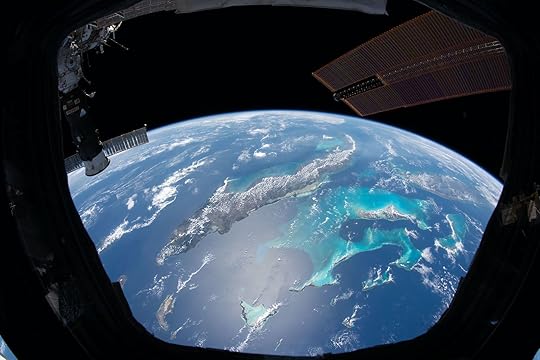
From ground level, Earth wasn’t a great place to be in 2020. From outer space, however, it looked as beautiful as ever. NASA just released its 20 favorite images taken by astronauts aboard the International Space Station throughout the past year.
According to NASA, “The men and women who live and work on the International Space Station take thousands of photographs of their home planet every year, and we asked the folks at the Earth Science and Remote Sensing Unit at NASA’s Johnson Space Center for a few of their favorites from 2020.”
All of these photos were taken using a Nikon D4 or D5 camera, with several interchangeable lenses to capture unique perspectives. From documenting the fall colors of Ottawa, Canada, to the Australian sunrise, the photos capture Earth’s natural beauty. 
Cuba and the Bahamas
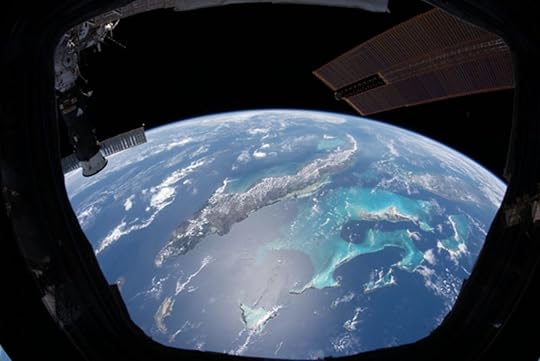
Photo: NASA
Cooper Creek, Australia
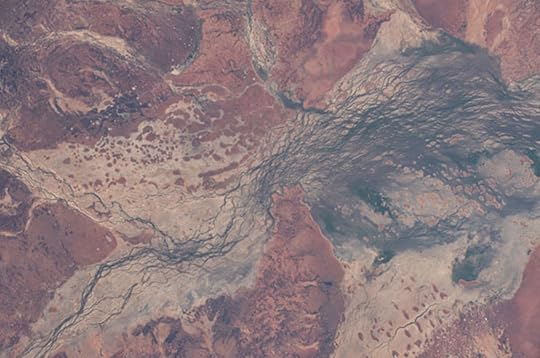
Photo: NASA
Corsica in Sunglint

Photo: NASA
Dust over Cyprus
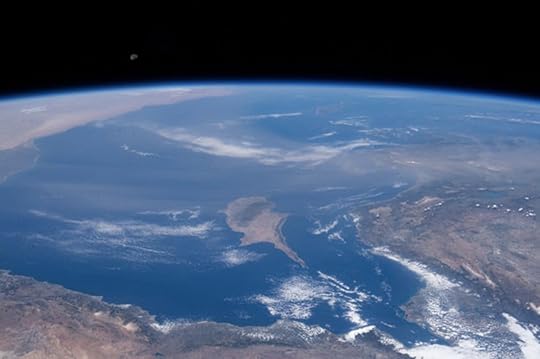
Photo: NASA
Fall colors near Ottawa, Canada

Photo: NASA
The Great Lakes
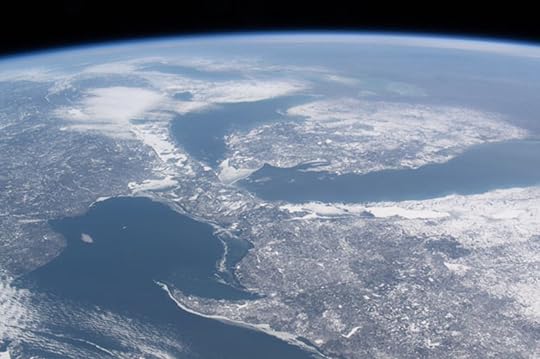
Photo: NASA
Kerguelen Islands

Photo: NASA
Wind farms on Maui
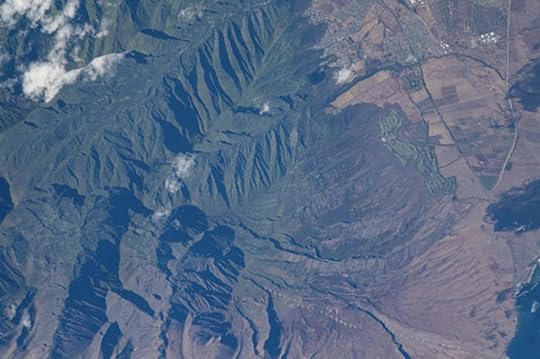
Photo: NASA
Moonrise over the southern Atlantic Ocean

Photo: NASA
Lakes and fires, southern Kenya
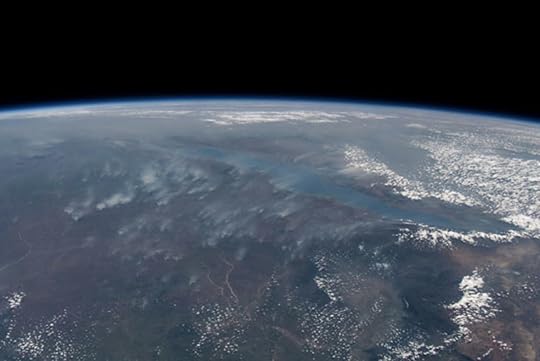
Photo: NASA
Sunrise over Great Australian Bight

Photo: NASA
Paris at night

Photo: NASA
Flooding along the Nile in Sudan

Photo: NASA
New Zealand

Photo: NASA
Terminator over western Australia
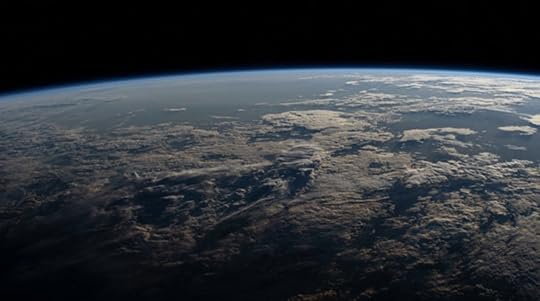
Photo: NASA
Airglow above the western Indian Ocean
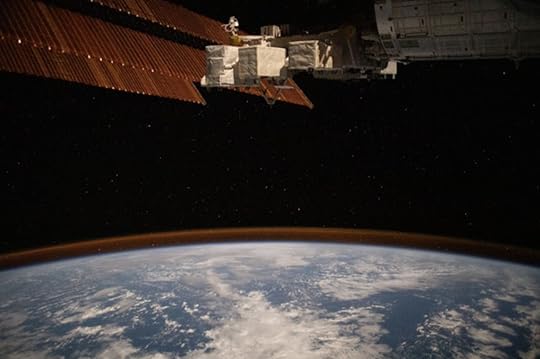
Photo: NASA
Dust plume over southern Argentina
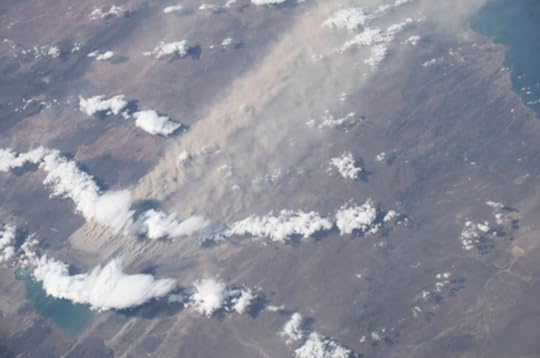
Photo: NASA
Reefs of Moindou Bay, New Caledonia

Photo: NASA
Cloud swirl above the northern Sahara Desert
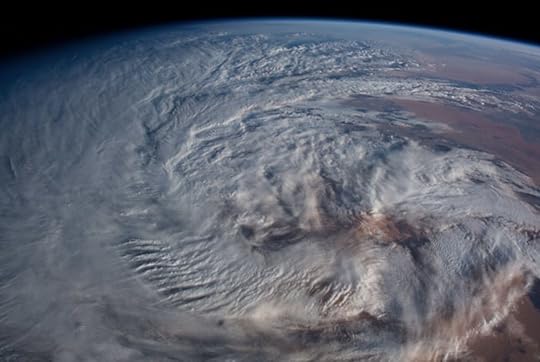
Photo: NASA
Earth and moon from Crew Dragon
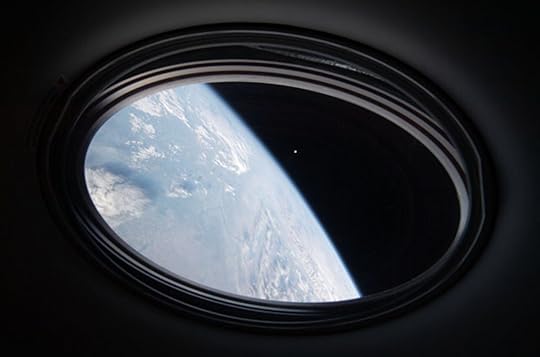
Photo: NASA
The post NASA reveals its top 20 photos of Earth from 2020 appeared first on Matador Network.

Ethiopia’s most beautiful landscapes
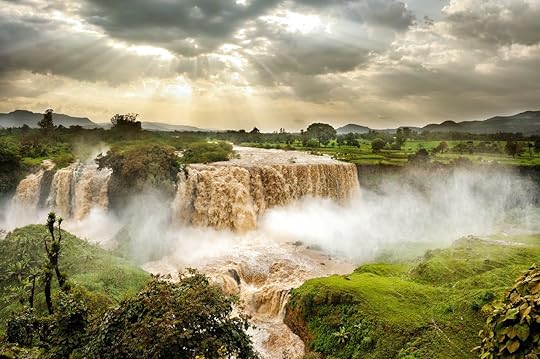
It’s an unfortunate reality that most travelers to Africa focus on a few select destinations like Egypt and South Africa, missing out on much of what the rest of the continent has to offer. Turn your eyes east to Ethiopia, and you’ll discover a world of natural beauty you may not have considered before. Despite the current ongoing conflict in Ethiopia’s Tigray region, the country has historically been one of the continent’s safest and most stable, and continues to offer travelers innumerable reasons to visit. From the epic Blue Nile Falls to the otherworldly Dallol volcano (the hottest place on Earth), it’s no wonder Ethiopia has more UNESCO World Heritage sites than any other African country. These are the most breathtaking sites in Ethiopia that will make you wonder how you ever overlooked it.
1. The Simien Mountains
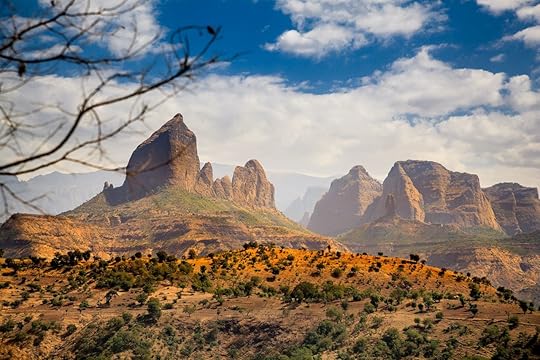
Photo: Radek Borovka/Shutterstock
Simien National Park in northern Ethiopia is a UNESCO World Heritage site. The Simien Mountains include Ras Dejen, the highest point in the country, and there is no shortage of views of the lowlands below. Stretching 100 miles, and reaching an altitude of 15,000 feet, the mountains are one of the largest ranges in Africa, and are also home to a diverse ecosystem, including rare animals such as the gelada baboon, walia ibex, and Ethiopian wolf.
2. Blue Nile Falls

Photo: Aleksandra H. Kossowska/Shutterstock
Zambia’s Victoria Falls usually hogs the continent’s limelight when it comes to waterfalls, but Blue Nile Falls in Ethiopia also deserves a seat at the cool kids table. Called “Tis- Isat” by locals (meaning “Smoke of Fire”), the Blue Nile Falls are the most dramatic waterfall anywhere on the Nile. They stretch a quarter-mile wide during the flood season between June and September, and cascade down over 150 feet. The “smoke” nickname is derived from the mist rising up from below. There are several hiking trails through the green countryside around the falls, and if you’re lucky, you might even run into some of the forest’s resident monkeys or birds.
3. Arba Minch
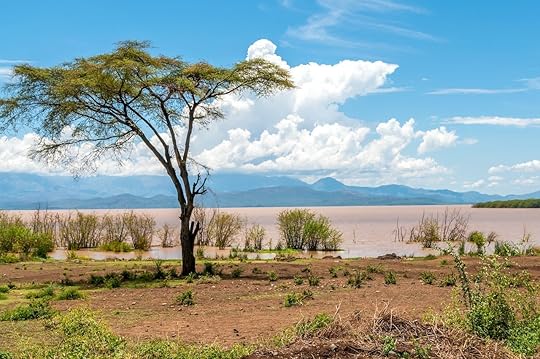
Photo: milosk50/Shutterstock
In Arabic, Arba Minch means “forty spring,” and that moniker isn’t far off. The area has an abundance of small springs, and two of the largest lakes in the country (Chamo and Abaya). The town of Arba Minch itself sits 4,200 feet up in the foothills of the Rift Valley, with incredible views of the surrounding Nechisar National Park. The rock church of Abuna Yemata is perhaps the most notable human-made sight, at an altitude of 8,500 feet and accessible via a challenging climb up a cliff wall. It’s known for its wall paintings dating back to the fifth century.
4. The Danakil Depression
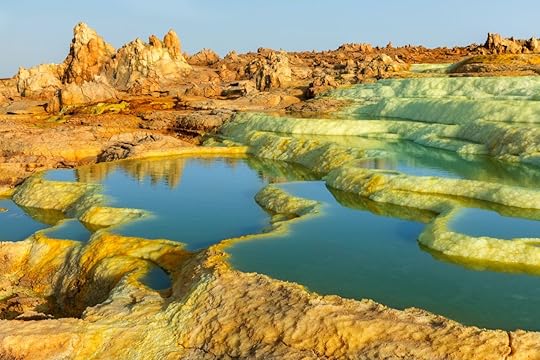
Photo: Manamana/Shutterstock
Ethiopia might sound like a tempting warm-weather escape during the winter months, but the Danakil Depression might be more than you signed up for. In northern Ethiopia, this is one of the lowest, hottest, and driest places on Earth. It’s home to the Erta Ale lava lake, one of just six lava lakes on Earth, and Dallol — a boiling hot spring that resembles a strangely colorful apocalyptic hellscape more than anything else. This might not sound like a ringing endorsement, but Dallol’s sulphur springs are one of the most geographically unique landscapes anywhere in the world, and worth the temporary physical discomfort of a visit.
5. Awash National Park
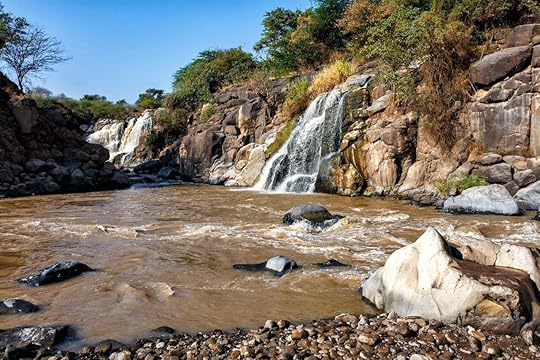
Photo: Henk Bogaard/Shutterstock
Located in the dry savanna of the Rift Valley, Awash National Park is home to a 500-foot-deep gorge, waterfalls, and the dormant volcano of Mount Fantale. There’s also the Filwoha Hot Springs — don’t worry, they’re not as hot as Dallol — which feed Lake Beeska and a network of blue pools. The park is also considered one of Ethiopia’s best destinations for birding, with over 450 species spotted there including yellow-throated serin and the Ethiopian cliff swallow. If you’re more interested in larger creatures, warthogs, black-backed jackals, and East African oryx also call the park home.
6. The Gheralta Mountains
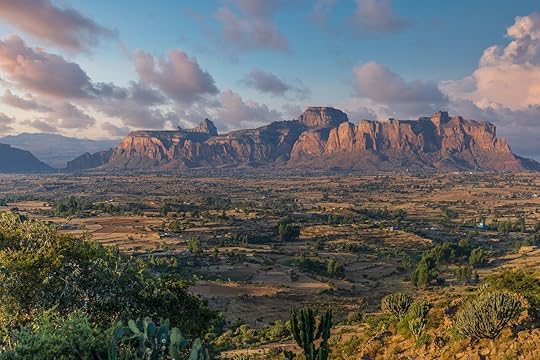
Photo: Framalicious/Shutterstock
This corner of northeastern Tigray almost resembles the American West, with its flat plains and distinct, mountainous rock formations reminiscent of Utah’s Monument Valley. The mountains themselves are known as Gheralta, and they’re quite a departure from the strange landscapes of Dallol and lush springs of Arba Minch. Gheralta is best known for its cluster of 35 rock-hewn churches, the largest such collection anywhere in the country. Many sit on rock outcroppings accessible only via narrow, treacherous-looking escarpments.
7. Bale Mountains National Park
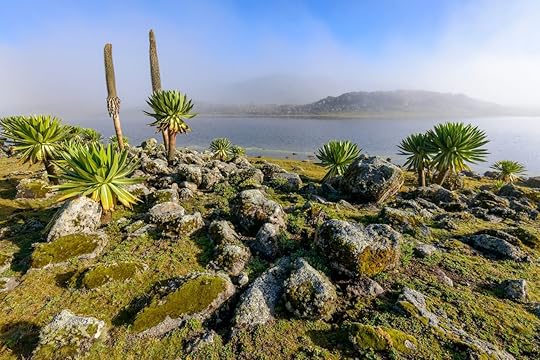
Photo: Roger de la Harpe/Shutterstock
Another of Ethiopia’s UNESCO World Heritage sites, Bale Mountains National Park covers around 850 square miles and has some of the most diverse geography in the country with towering mountains, scenic valleys, and miles of forests. Its Sanetti Plateau is the largest such plateau at this altitude on the entire continent, and it’s considered one of the best places in the world to see the rare Ethiopian wolf. 
More like thisCulture25 life-changing experiences in Africa you need to have before you die
The post The most breathtaking geography in Ethiopia appeared first on Matador Network.

Why is Steamboat Geyser so tall?
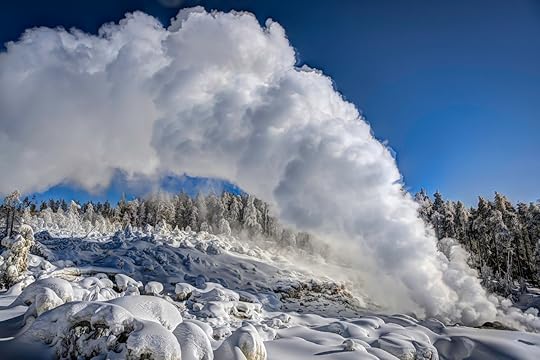
Everyone stands in awe of geysers as they spout into the air, but what actually causes that sudden burst and why are some taller than others? A new study published in the Proceedings of the National Academy of Sciences has the answers, particularly with regard to the famous Steamboat Geyser in Yellowstone National Park.
There are more geysers in Yellowstone than anywhere else in the world. One of them, Steamboat Geyser, had been dormant until recently. Prior to 2015 it only erupted sporadically, and was completely silent for three years afterward. In March 2018, however, it began erupting once again — 109 times, to be exact, between March 2018 and July 2020.

Photo: Laura Hedien/Shutterstock
Now Steamboat erupts an average of once every seven days, and the eruptions exceed heights of 300 feet. The tallest active geyser in the world, Steamboat even eclipses the iconic Old Faithful, which usually reaches 106 to 184 feet.
According to the study, Steamboat’s water is deeper underground than other geysers and therefore contains more thermal energy that creates tall and powerful eruptions.
“Steamboat’s erupted water is stored deeper than at other geysers. If eruptions begin when water is at the saturation temperature, water in deeper sources has more thermal energy that can be converted to mechanical work and kinetic energy driving the eruption. We found a correlation between the depth of the shallow-water sources (bubble traps) under geysers and eruption height, but we highlight that there is much uncertainty in estimating source depth and eruption height.”
The study explains that acquiring detailed data about geysers like Yellowstone’s Steamboat “would help answer fundamental questions about how geysers work and provide insight into similar multiphase processes and associated geophysical signals that occur at volcanoes and on other planetary bodies, such as Saturn’s moon Enceladus.” 
More like thisParks + WildernessThis epic fall road trip to Yellowstone and Grand Teton bypasses the crowds
The post New study explains why the world’s tallest geyser eruptions happen in Yellowstone appeared first on Matador Network.

January 6, 2021
The Delray Beach Market in Florida

Florida’s largest food hall is slated to open this spring in Delray Beach, Florida. The Delray Beach Market by Menin Development will be four stories tall and 150,000 square feet, and it’s designed to call attention to Delray’s culinary landscape. The market is preparing to open less than a block south of Atlantic Avenue and will serve as a hub for the city.

Photo: Menin
Inspired by the town’s history as a travel and agricultural center, the hall will feature specialty food purveyors, innovative dining concepts, and creative food incubators centered on local and ethnic gastronomy. There will also be a creative beverage program, curated art and food exhibitions, and programming like live music and cooking classes.

Photo: Menin
Jordana L Jarjura, President and General Counsel for Menin Development, said, “It’s been years in development and it’s finally here, ready to be revealed and to play host to the nearly three million annual visitors to Delray Beach. We’ve worked hard to analyze and forecast what Delray Beach locals were missing and what our friends from around Florida and the country would love to patronize in a new model food hall, and placed it all within this single destination for food lovers to enjoy.”
The space will consist of a main hall, a central bar with a build-your-own Bloody Mary bar, a craft beer bar on the ground floor with a variety of craft beer selections, and an open show kitchen on the mezzanine level. 
More like thisFood + DrinkThe 8 best food halls in Denver and what to eat at each
The post Florida’s largest food hall is coming to Delray Beach this spring appeared first on Matador Network.

Kauai’s ‘resort bubbles’
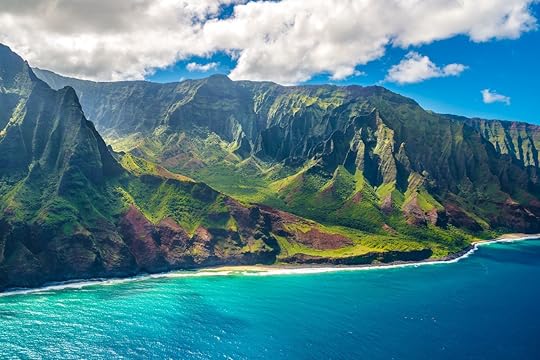
Going on a vacation of any kind during the pandemic is a complex proposition, but for many, the prospect of a Hawaii vacation is worth the hassle. To make travel easier for tourists, the island of Kauai has started a pre- and post-travel testing program for out-of-state visitors staying in its “resort bubbles.”
While other Hawaiian islands allow travelers to bypass the two-week quarantine with a negative COVID-19 test, Kauai is opting out of that testing program and putting forth its own procedures. Out-of-state visitors staying in approved resorts will be able to take a post-travel test three days after arrival and will be released from quarantine once they get a negative result. If they stay in a non-approved accommodation, they won’t be allowed to leave their rooms at all and must undergo a full 10-day quarantine.
“Resort bubble” hotels include the Cliffs at Princeville, Hilton Garden Inn Kaua‘i Wailua Bay, Ko‘a Kea Hotel & Resort at Poʻipū, The Club at Kukui‘ula, Timbers Kauai Ocean Club & Residences at Hōkūala, and Kauaʻi Marriott.
Those traveling from other islands to Kauai will be able to avoid quarantine by creating a Safe Travels account, completing a health form, taking a pre-travel COVID-19 test within 72 hours of arriving in Hawaii, and uploading their negative result to their Safe Travels account. More information is available online. 
More like thisWhere to Stay9 stunning yet affordable Airbnbs on Kauai, Hawaii
The post You can visit Kauai if you stay inside these ‘resort bubbles’ appeared first on Matador Network.

Newest national park in the US
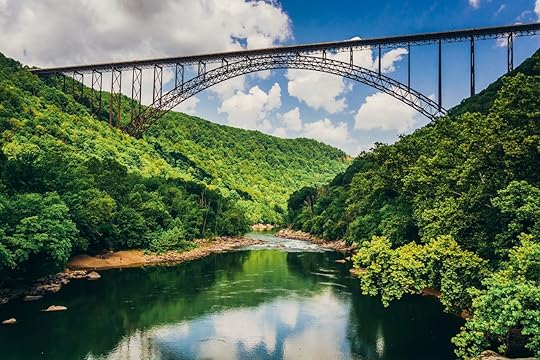
The United States’ newest national park is the New River Gorge in West Virginia, formerly a national river. It’s been upgraded to a national park and preserved thanks to last month’s COVID-19 stimulus package. It will be the 63rd national park in the country, and the 20th preserve.
The park is over 70,000 acres, along 53 miles of whitewater flowing through sandstone cliffs, and located an hour from Charleston, WV. The park and preserve will include three locations already managed by the National Park Service, including New River Gorge itself, the Gauley National Recreation Area, and the Bluestone National Scenic River.
The Appalachian canyon is known as a rock climbing and whitewater rafting destination, as well as for having several popular hiking trails. The park has over 1,500 rock climbing routes, Class IV and V whitewater rapids for truly adventurous and adrenaline-seeking visitors, and mountain biking trails. It’s also home to wildlife like white-tailed deer, river otters, and bald eagles, and flora like West Virginia’s white and pink state flower and the great rhododendron. 
More like thisParks + WildernessThe best national parks for every type of traveler
The post The newest US national park is in West Virginia appeared first on Matador Network.

The best vegan snacks
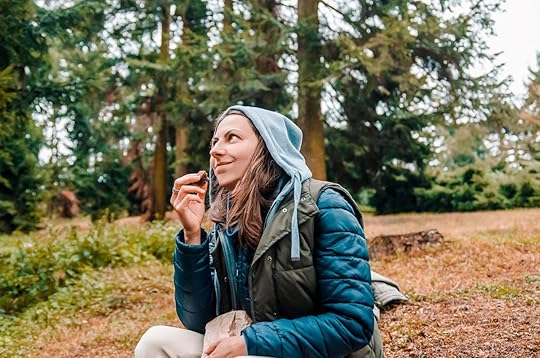
If you are headed outdoors and want some plant-based nutrition to fuel your adventures, you no longer need to settle for that bag of granola or a few fingerfuls of dried fruit. You can and should eat well outside, because part of the fun of burning calories in the outdoors is refueling the tanks with tasty provisions. Try these vegan energy snacks and outdoor meal options to keep charged and healthy while hiking, camping, biking, or otherwise on-the-go.
For day hikes, bike rides, and basic single-day excursions
When departing on a day hike or bike ride, the key to success is quick power. You need foods that will provide a boost in energy and much-needed calories while leaving you feeling loose and ready instead of lethargic and bloated. This starts with quick-grab items that should be kept in your backpack at all times, like Vega Protein Bars and Clif Bars. Get in the habit of keeping a box of one or the other in your kitchen and re-stocking your pack post-excursion. Evo makes a great hemp protein bar that’s kind of like eating a cookie but that a dietitian will actually approve of, with 12 grams of protein in each bar.
Trail mix is another source of quick energy with the benefit of not being “processed” into a bar, making it slightly more natural in most cases. However, if you’re on a bike, it’s harder to eat loose foods like almonds with one hand, so they’ll require a dedicated stop. If you do opt for trail mix, aim for a mix that’s high on nuts and dried fruit, and lower on the processed carbs — since, as delicious as bagel chips are, they don’t provide the energy boost.
If you want the energy of trail mix in a form that’s easier to eat quickly, you can make almond energy balls at home. You’ll find plenty of recipes online, but they are ridiculously easy to make. Just mix together almond butter with healthy items like chia seeds, flax meal, and/or oats; toss in some vegan dark chocolate chips; sweeten it all with maple syrup or chopped dates; and then roll them into bite-sized balls. You can even cover them in shredded coconut, if you want.
For a savory snack on your shorter excursions, try vegan jerky, which are built from vegan proteins like tempeh. Some specialty food and nutrition shops sell Louisville Vegan Jerky, or you can buy it online. No matter how you get it, keep a bag in your pack or in your kitchen, and grab a few pieces to go before heading out.
Back at home, make a protein shake with one of the many vegan protein powders available at nutrition stores, natural grocery stores, or online. Garden of Life Plant-Based Protein Powder mixes easily with water and contains 30 grams of protein designed to help your body recover from strenuous exercise. If you need an entire meal in shake form, try Ka’Chava, which includes all of the necessary proteins and carbs to keep you moving.
For long bike rides, backpacking, and overnight trips
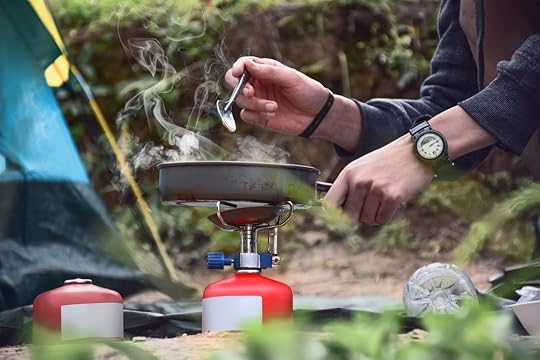
Photo: anusorn thongpasan/Shutterstock
For day-long bike rides or overnight backpacking/bikepacking trips, you’re going to need at least a couple of full meals in addition to the snacks listed above. Refueling after extended exercise is especially important when you’re headed back out the following morning, so don’t be shy about cooking up a feast at your campsite. Patagonia Provisions has vegan options that boil over a fire or gas burner, as do other campfire food products available at your local REI or outdoor provisions retailer.
On days of extended exercise, maintaining carbohydrate energy — known as glycogen — is critical to success. Your body stores enough for an hour or two of moderate to heavy endurance, and after that, it begins to burn fat as an energy source. Fat metabolizes slowly, which doesn’t work as well with exercise; as we’ve noted already, rapid energy is key. The solution to this is energy gels, a quick and easy to pack go-to of which there are numerous vegan options. Vega Sport and Clif Bar make vegan energy gels, as does GU Energy. Stock enough that you can consume one per every hour of heavy exercise, or every two to three hours of moderate exercise.
But there’s no need to rely solely on packaged meals, especially if you’re backpacking with a gas burner and some simple camp cookware. If you have a pot, water, and a few basic ingredients, you can whip up a gourmet camping meal in less time than it takes to down a bottle of kombucha. Bagged whole wheat spaghetti noodles fit nicely into backpacks as they’re long and skinny, and it doesn’t really matter if they snap. Pasta with red lentil sauce is easy to make and full of nutritious power (and it’s delicious), but any quick sauce you prefer and whole wheat noodles provide healthy carbs and calories, and you can kick up the protein content by adding your favorite veggie pattie, beans, or lentils.
Daal soup is an easy win as well, and you can get packaged varieties at your local grocer or order online. For this and other hearty soups, look for options that aren’t condensed, i.e. you won’t need to add water, and that don’t require cold storage prior to opening.
Winter sports and cold weather solutions

Photo: Vitalii Nesterchuk/Shutterstock
Warm meals beckon when the snow falls. This is true whether you’re heading out for a couple of hours on the snowshoes or winter camping — though if you are camping, be sure to bring the burner and a pot because hot meals are essential. And you’ll also need snacks easy to grab with those mittens on if you’re skiing or snowshoeing. Keep peanut butter on hand for on-the-go munchies, whether that be a PB&J, trail mix, or in bar form, as well as other high-calorie, high reward snacks like dried fruits and plant-based protein bars.
Noodle dishes go well with cold weather camping, and you can channel warmer climates by cooking Udon noodles with tofu and veggies, tossed in tamari or your favorite salty sauce from further east. Dehydrated bean dip or hummus works well for campsite appetizers. In the morning, packaged oatmeal heats up quickly and doesn’t take much room in the gear setup.
And here’s the kicker: whether you’re at a campsite or back in the comfort of your kitchen, top off the day with vegan hot chocolate. It can be as simple as a trip to the grocery store for a package of non-dairy Swiss Miss or as gourmet as crafting your own cup from vegan cocoa powder. If you’re truly hardcore and down for some experimentation, you can even melt some dark chocolate in water and/or your favorite nut milk on the camp stove, and indulge Oaxaca style. Share a sip of this deliciousness with your crew and they may never go back to cow-milk-based hot chocolate again. 
More like thisOutdoorCrush your sports and training goals with these plant-based nutrition tips
The post The best vegan energy snacks and meals for outdoor adventuring appeared first on Matador Network.

Hotel room inspired Queen’s Gambit

No one could have predicted that a show about chess would capture the hearts of so many people who probably don’t know how to play chess — but that’s what makes The Queen’s Gambit such a great series.
The popular Netflix show has not only inspired people to learn the game, but also inspired this hotel to give itself a Queen’s Gambit makeover.

Photo: 21c Museum Hotels/Facebook
The 21c Museum Hotel in Lexington, KY, which is also the home of the protagonist in the show, just unveiled a room inspired by the show’s mid-century modern aesthetic. The hotel describes the Harmon Room as “a retro time capsule of American mid-century modern design inspired by the Lexington-based Netflix series.”
The design was the brainchild of local designer Isabel Ladd, Mid-Century Design League of Lexington founder Lucy Jones, and Alex K. Mason of Ferrick Mason Inc., and also features massive chess pieces suspended from the ceiling.

Photo: 21c Museum Hotels/Facebook
There’s also a stocked bar cart, a gold peacock art piece hanging over the bed, rare books, an itinerary of places to visit in the city inspired by the show, and of course, a chess set.

Photo: 21c Museum Hotels/Facebook
The room is only available to book for a limited time, and you have to call the hotel for price and booking information. 
More like thisWhere to Stay7 desert hotels where you can truly get away from it all
The post You can now stay in this hotel room inspired by ‘The Queen’s Gambit’ appeared first on Matador Network.

Luxury hotels offer on-site tests
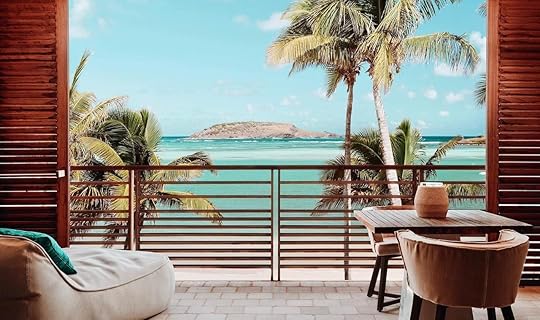
When the W Hotel South Beach underwent its massive renovation in the summer of 2020, it aimed to put itself at the forefront of luxury travel. It changed out the decade-old purple and gray décor for sleek, South Florida all white. It built a sparkling new spa with eucalyptus steam showers. It even put fluffier towels in the bathrooms and changed the brand of its body products.
And, in a sign of the times, the hotel also added its own on-site COVID-19 testing center.
Not so long ago, having an outpost of an upscale restaurant would have sufficed to make the W a major player in the luxury game. But in 2020, guests were far more interested in the COVID testing facility run by Sollis Health.
“People were asking upfront or in email, ‘Is there testing available?’” says W South Beach owner David Edelstein. “So now we’re able to tell people we have in-house testing and follow up capabilities.”
With New Yorkers flocking to South Beach and other warm-weather destinations to escape the winter cold and restrictive lockdowns – and a negative COVID test the only way to avoid a 14-day quarantine when they return home – on-site testing has quickly become a sought-after amenity at luxury hotels. And as the pandemic stretches toward a full year of gripping the country, it may become the competitive advantage that sets luxury leaders apart.
On-site hotel testing provides the luxury of convenience and more

Photo: W South Beach (W South Beach Hotel and Residences)/Facebook
“Five years ago, a meaningful luxury amenity might have been a gift shop or a spa,” says Sabine Heller, chief commercial officer for Sollis Health, the concierge medical service provider running the clinic at the W. “In today’s world of luxury amenities, it’s a testing facility. It’s a sign of the times.”
The Sollis space isn’t just luxe in terms of convenience. To an outside observer, it could easily pass as the W’s spa. Colorful artwork covers the walls and calming music plays in the reception area. Socially distanced patients wait in plush chairs for their turn in one of two swabbing rooms. Edison bulbs light the hallway leading to the discreet testing centers.
“We want any medical experience we create to be stress free and static free,” says Heller. “And we believe the design in this space succeeds in achieving that.”
The testing process is, by all appearances, stress free. Guests can book a test directly through the hotel and have results within 24 hours. The price of the test isn’t included in the room rate, but it is covered by most insurances.
“The demand is natural,” she says. “It’s a logical extension of our environment and climate today.”
On-site testing is also a creative way of using unused space

Photo: Cryptographer/Shutterstock
Though the boutique clinic at the W feels like a medical extension of a luxury vacation, on-site testing can also help hotels make use of meeting space that’s been sitting vacant since the pandemic began. At the Marriott Singer Island Beach Resort and Spa near West Palm Beach, general manager Roger Amidon has been filling an unused ballroom with a team from Helix Medical, which provides COVID-19 tests for the resort’s guests.
“Our ballroom is empty,” he says, “so it’s convenient for us to have these people onsite. Guests can walk down to a meeting space, just off the lobby, and do it in a private area.”
Amidon said he floated the idea of onsite testing during a planning meeting at the beginning of November, and was initially met with crickets and tumbleweeds. But as his team looked ahead — and realized that the bulk of their guests were coming from places like the northeast and Chicago, where negative tests would be required to return home — the concept started to gain traction.
The resort began testing just before the Thanksgiving holiday, offering tests two days a week. It recently expanded to three days, with Helix performing about 20 PCR tests per day. Results come back from a nearby lab in under 48 hours.
“Hygiene is going to be the next luxury,” Amidon says. “This is not a revenue center for me, but a convenience for my guests. And if I can sway our market share by doing this, it’s a win-win.”
Luxury travelers will pay for convenience and peace of mind

Photo: Igor Chus/Shutterstock
On-site testing isn’t just a competitive advantage. In places where medical infrastructure is limited, it can make the difference between people making the trip or staying home. In St. Lucia, for example, the Coconut Bay Beach Resort secured 1,000 COVID rapid antigen tests, in anticipation of guests from the US who would prefer not to spend their vacations looking for a testing facility before they return home.
“When these requirements came out, there were phone calls and cancellations coming in,” says Coconut Bay CEO Mark Adams. “This was a way to say, hey, we got you covered if you need a test to get back home.”
In what is certainly a hotel special promotion for the times, Coconut Bay offers a free COVID test with any five-night stay. Free breakfast, apparently, is so 2019.
In St. Barts, the Le Barthelemy Hotel and Spa has contracted with a local doctor who makes room calls for guests who need a test, with results available in 24 to 48 hours. In Nassau in the Bahamas, the Grand Hyatt Baha Mar offers on-site rapid antigen testing on arrival, so guests know their results within hours of landing.
“I think it gives the traveling public and discerning guest an extra layer of safety, knowing other guests and (staff) are tested,” says general manager Ulrich Samietz. “That’s a very important part of luxury travel, and I think we’re doing something very innovative that will be valued by the traveling public.”
That value may extend well past the pandemic too. Even once vaccines are commonplace and the need for COVID testing has diminished, the legacy of on-site, concierge medical service may well live on.
“Generally people are looking to spend their money in a way that’s more experiential and more focused on wellbeing,” says Sollis’ Heller as we sit poolside at the W on a 75 degree December afternoon. “There’s been a shift away from consumer goods for a long time and towards wellness experience, self care. We’ve already been on that trajectory for a long time. So this is part of that continuum.”
Heller says Sollis plans to continue using the South Beach location as a clinic as for its members, who mostly live in New York and Los Angeles. It will also serve as an on-site clinic for W South Beach, something owner Edelstein sees not only as a selling point, but as a necessity in the future.
“I see (on-site testing) moving forward as concierge medical care in luxury hotels,” he says. “They may not all be in house, they may be on Zoom. But it’s exploding in terms of popularity, and all luxury hotels will, at some point, have to have concierge medical care available. And I think it’s great to have that available for employees and guests.” 
More like thisAirports + FlyingHow to plan for 2021 travel in the age of COVID, according to 23 travel agents
The post Is on-site COVID-19 testing the new ‘it’ luxury amenity? appeared first on Matador Network.

Matador Network's Blog
- Matador Network's profile
- 6 followers



